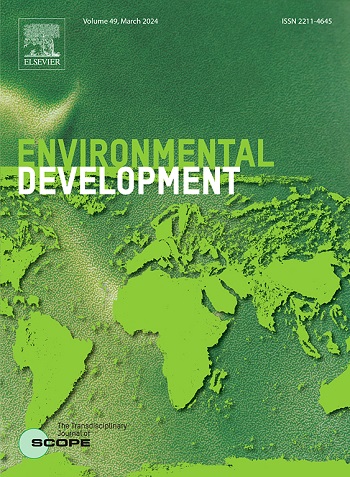Schoolyard revegetation as a dual mechanism for environmental education and overheat mitigation
IF 4.7
2区 环境科学与生态学
Q2 ENVIRONMENTAL SCIENCES
引用次数: 0
Abstract
Current research gaps in environmental action guidelines that tackle urban heat island effects and improve environmental education to students are identified in order to address urban and environmental challenges. This research aims to promote revegetation patterns in schoolyards through a scientific-educational strategy of planting trees, thereby increasing the shaded area and promoting environmental activities in schools in warm climates. This study provides a standardised strategy in five phases for the diagnosis, decision-making, proposal, and monitoring of tree planting, which can be replicated in multiple climatic and urban contexts. This study presents a real-life pilot experience that tests and applies this strategy in Itaca secondary school, in Southern Spain, within an H2020-European research project, in which a diagnosis of the schoolyard and an in-situ tree-planting strategy is developed by researchers together with students. The collaborative methodology is based on a multidisciplinary evaluation involving a selection of tree species and their in-situ planting by the students, thereby filling the gap with an action strategy towards greener practices in schools and highlighting key outcomes for upcoming bioclimatic policies. The results confirm an increase in the Normalised Difference Vegetation Index (NDVI) from 0.15 to 0.74 in tree-planting areas, and 91.5% of the 142 participants in the educational community have perceived this tree-planting strategy as highly satisfactory for increasing outdoor comfort. The conclusions reveal multiple insights that contribute to sustainable development goals, based on the environmental education between researchers and students and on the advantages in mitigating the effects of overheating in schoolyards.
校园绿化作为环境教育和缓解过热的双重机制
为了应对城市和环境挑战,确定了目前在解决城市热岛效应和改善对学生的环境教育的环境行动指南方面的研究差距。本研究旨在通过植树的科教策略促进校园绿化模式,从而增加阴凉面积,促进温暖气候下学校的环境活动。本研究为植树诊断、决策、建议和监测提供了五个阶段的标准化策略,该策略可在多种气候和城市环境中复制。本研究展示了一个真实的试点经验,在h2020 -欧洲研究项目中,在西班牙南部的伊塔卡中学测试并应用了这一策略,其中研究人员与学生一起制定了校园诊断和原位植树策略。合作方法基于多学科评估,包括树种的选择和学生的就地种植,从而填补了学校绿色实践的行动战略的空白,并突出了即将出台的生物气候政策的关键成果。结果证实,植树地区的归一化植被差异指数(NDVI)从0.15增加到0.74,教育界142名参与者中有91.5%的人认为这种植树策略对增加室外舒适度非常满意。基于研究人员和学生之间的环境教育以及减轻校园过热影响的优势,这些结论揭示了有助于实现可持续发展目标的多重见解。
本文章由计算机程序翻译,如有差异,请以英文原文为准。
求助全文
约1分钟内获得全文
求助全文
来源期刊

Environmental Development
Social Sciences-Geography, Planning and Development
CiteScore
8.40
自引率
1.90%
发文量
62
审稿时长
74 days
期刊介绍:
Environmental Development provides a future oriented, pro-active, authoritative source of information and learning for researchers, postgraduate students, policymakers, and managers, and bridges the gap between fundamental research and the application in management and policy practices. It stimulates the exchange and coupling of traditional scientific knowledge on the environment, with the experiential knowledge among decision makers and other stakeholders and also connects natural sciences and social and behavioral sciences. Environmental Development includes and promotes scientific work from the non-western world, and also strengthens the collaboration between the developed and developing world. Further it links environmental research to broader issues of economic and social-cultural developments, and is intended to shorten the delays between research and publication, while ensuring thorough peer review. Environmental Development also creates a forum for transnational communication, discussion and global action.
Environmental Development is open to a broad range of disciplines and authors. The journal welcomes, in particular, contributions from a younger generation of researchers, and papers expanding the frontiers of environmental sciences, pointing at new directions and innovative answers.
All submissions to Environmental Development are reviewed using the general criteria of quality, originality, precision, importance of topic and insights, clarity of exposition, which are in keeping with the journal''s aims and scope.
 求助内容:
求助内容: 应助结果提醒方式:
应助结果提醒方式:


